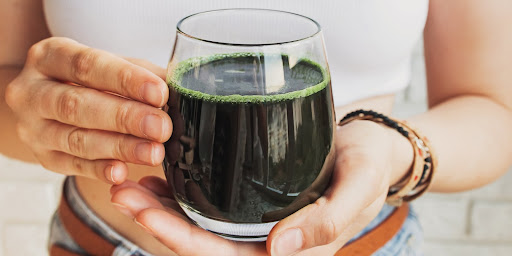Today, you can find spirulina in grocery stores and as a popular ingredient in healthy sodas, smoothies and wellness snacks. If you’re a health-conscious individual and wondering what makes this brightly coloured algae so special, where do we start? Not only is it an ideal source of plant-based protein, vitamins, minerals and antioxidants, but it’s also as good for the earth as it is for us!
Here Are 9 Ways Spirulina Can Help The Planet
Easily Grown With Minimal Resources
Growing spirulina is relatively simple. All that it needs to flourish is water, some minerals and the right amount of sunlight, warmth and shade. This simple formula is required to produce all of the vital nutrients that spirulina boasts. Responsible spirulina farms cause minimal damage to the environment and if they’re anything like us, they even benefit the surrounding environment by absorbing toxins and CO2.
Cleaner Air
This brings us to our next point. Like most plants, spirulina is a photosynthetic organism. That means it converts sunlight into energy, reducing the amount of CO2 and increasing the amount of oxygen in the atmosphere. In fact, algae is the primary producer of oxygen for all aquatic life and every second molecule of the oxygen we breathe is produced by algae.
Saves Precious Farm Land
While most people associate protein with steaks, eggs and other animal-based sources, to safeguard the future, our focus needs to be on environmentally efficient foods and crops. Not only is spirulina more planet-friendly than meat and dairy, it demands significantly less space than other commonly grown crops, such as soybeans and corn. It doesn’t compete for precious agricultural land because it happily grows with very little human interference in aquatic environments like freshwater lakes and saltwater oceans.
Saves Water
Since spirulina is grown in water, its production doesn’t require much water at all. In fact, spirulina takes less water than any other crop.
Food Security
As one of the most nutrient-rich foods on earth and able to grow in most environments with very little resources, spirulina is being used to provide good quality, sustainable protein in some poverty-stricken countries. The growing demand for protein as well as environmentally-friendly food sources has led to a number of organisations cultivating spirulina to address malnutrition. Spirulina contains 4g of protein per teaspoon and is an excellent source of all eight essential amino acids and ten of the twelve nonessential amino acids.
Less Waste
Waste is a giant problem plaguing the food industry. Unlike other fruits, vegetables and meats where ‘imperfect’ or ‘undesirable’ parts are thrown away, the entirety of spirulina algae is used.
Decreases Emissions
We know the importance of swapping meat for plant-based options to ease the strain on the planet. Why not decrease emissions even further by occasionally swapping your protein shake to a spirulina drink. What’s more, many spirulina products are climate positive. That means breathing life back into the planet by pumping out oxygen and recycling CO₂.
Vegan-friendly Source of Protein
While some people might not be impressed by spirulina taste, you will be delighted to know that just a teaspoon of spirulina contains 4g of protein – close to double that of steak! Spirulina also beats most of the plant-based protein when it comes to protein density, making it a perfect option for those people who are on a plant-based diet.
Vegan or not, it’s important that we all do our part to reduce our impact on the planet. Alternative sustainable protein sources like spirulina can be a great choice when it comes to reducing energy usage and animal suffering.
Being Healthy Helps The Environment
When you feel good in your body, you’re more inclined to help the planet! Next time you weigh up whether you have the energy to cycle to work, research has found that spirulina can help reduce joint pain and may even make you feel more energetic.
How To Add Spirulina To Your Diet
There’s a growing list of options when it comes to adding this sustainable protein into your diet:
Powders
A spoonful of powdered spirulina can be stirred into a glass of water, juice or smoothie. Powders need to be added to food and drink, it’s not advised to take a spoonful by itself as it will dye your mouth and will be extremely difficult to swallow. Adding spirulina to your drink will colour it a deep blue colour and depending on how much you use and the other ingredients involved, it might add a slightly savoury, seaweed flavour.
Tablets and Capsules
It’s common to find spirulina sold in the form of capsules and pressed tablets. While they have the benefit of being convenient and easy to use, tablets and capsules are harder to break down and may pass through only partially digested.
Drink Spirulina
If you don’t want to alter the flavour of your smoothie, fear not, you can find tasteless spirulina products with all of the same benefits. Pre-infused drinks from brands like fulcompany benefit from being convenient as well as effective. What’s more, many carbonated spirulina drinks don’t feel like healthy drinks and make great diet soda alternatives.
The Takeaway
Adding spirulina to your diet is an easy way to incorporate vital nutrients into your diet while also supporting the environment. Protecting the planet should be at the forefront of our minds, and spirulina is as nourishing and sustainable as it gets. Why not look out for spirulina drinks next time you’re at the grocery store and see what this antioxidant-rich drink can do for you.










